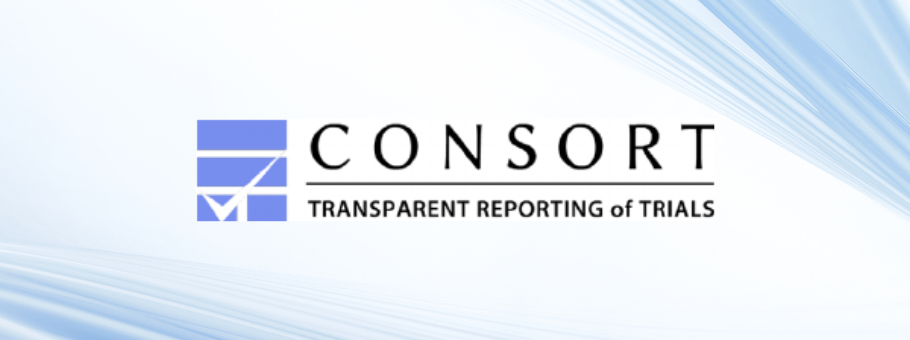Top 4 Guidelines for Health and Clinical Research Report

“My research idea is novel and the study design is robust, yet why did the editor reject my paper?” This question often worries researchers! Various top-tier journals have reported rejection rates between 80 to 95%. One of the major reasons for rejection is inaccurate or incomplete reporting of research. Moreover, inappropriate reporting leads to distortion of scientific literature. Therefore, journal editors are extremely cautious while scrutinizing manuscripts that especially involve studies pertaining to health and clinical study report. Consequently, to increase their chances of acceptance, researchers are often on the lookout for best practices and guidelines for conducting and reporting research.
Experts suggest that in addition to conducting impactful research, it is equally important to give a clear and complete account of your work. The key criteria that a top-notch article should fulfill are:
1. Research has a strong hypothesis and must be conducted using a flawless methodology.
2. Reported work is complete, ethical, replicable, and reproducible
3. It is easily understood by the target audience
4. Findings are applicable and useful for the scientific community
Why Should Authors Follow Reporting Guidelines?
Suggestion: Why Should Authors Follow Guidelines for Clinical Research Study?
A manuscript has to go through an arduous path before reaching its crowning glory moment! Authors need to ensure compliance with all the requirements of the journal and provide all the essential supplementary documents. Journals often encourage authors to follow guidelines found on the Equator Network website for accurate reporting of results. When manuscripts are written as per standard clinical research guidelines, it ensures that they contain enough information for peer reviewers, editors,
and the target audience. Additionally, it helps them understand how clinical research was performed and assess if the outcomes are likely to be reliable. Besides, a well-defined framework assists authors to convey a complete version of what they did (methodology) and found (results). Researchers can use these frameworks throughout their course of study – planning, conducting, writing a manuscript, and reviewing. They can be used as an “aide memoire” to confirm that the manuscript contains all the relevant and essential information. They not only enhance reporting quality but also transparency of clinical study reports. Complete and accurate reporting enables the target audience to critically evaluate research, replicate it, and use it. They are useful for all the stakeholders of the scientific community including researchers, peer reviewers, journal editors, funders, institutions, ethical review boards, and learned societies. In our previous article, we have discussed the top six guidelines for reporting medical research. Let us look at some more highly useful guidelines established for other types of study designs.
Popular Research Reporting Guidelines
Suggested Subheading: Popular Clinical research Reporting Guidelines
1. COREQ (Reporting Guidelines for Qualitative Studies)
COREQ (Consolidated Criteria for Reporting Qualitative Studies) is a 32 item checklist that covers the reporting of studies using in-depth interviews and focus groups. It is recommended to be included in reports of qualitative clinical research. It includes elements such as information about the clinical research team or facilitator, relationship details with participants, details about the theoretical framework for study design, and specifics about findings, analysis, and interpretations. Therefore, authors should use this checklist to improve the rigor, credibility, and comprehensiveness of interview and focus group studies.
2. CARE (Reporting Guidelines for Case Reports)
CARE (Case REport) guidelines were developed using a consensus-based process for systematic reporting of clinical studies. A good case report demands an explicit explanation as to why and how a particular observation is significant in the existing body of knowledge. Adherence to the 13-item checklist helps clinical practitioners fulfill the need for transparency, precision, and completeness of case clinical study reports. Consequently, several biomedical journals endorse the use of CARE guidelines. The primary items of the checklist include title, keywords, abstract, introduction, patient information, clinical studies, timeline, diagnostic assessment, therapeutic interventions, follow-up and outcomes, discussion, patient perspective, and informed consent. Furthermore, authors can also explore CARE-writer, an online application tool for writing and formatting case reports. Authors can post case reports written using this application on preprint servers such as SSRN’s Health Science Case Reports Research Network.
3. AGREE (Framework for Clinical Practice)
The AGREE (Appraisal of Guidelines, Research, and Evaluation) framework was developed for assessing the methodological quality and transparency of clinical research guidelines. It comprises 23 items (each with specific reporting criteria) in six domains namely scope and purpose, stakeholder involvement, the rigor of development, clarity of presentation, applicability, and editorial independence. Authors can use it prospectively during the drafting stage to ensure that all necessary information is included. Moreover, it can also be used retrospectively as a quality assurance step. The funders of practice guidelines could encourage, promote or even mandate observance of the AGREE checklist as a way of increasing transparency.
4. ARRIVE (Reporting Guidelines for Animal Research)
The ARRIVE (Animal Research: Reporting of In Vivo Experiments) guidelines are a checklist of recommendations created to improve the reporting of animal research. Using the information and explanations presented in the checklists, researchers can design rigorous and reliable in vivo experiments. Furthermore, they can also minimize bias and get advice on experimental design, sample size, and statistical analyses. To facilitate the reporting process, the guidelines are organized in two sets namely- “ARRIVE essential 10” and “Recommended Set”. The “Essential 10” list encompasses information about 10 parameters – study design, sample size, inclusion and exclusion criteria, randomization, blinding, outcome measures, statistical methods, experimental animals, experimental procedures, and results that must be included in any manuscript describing clinical research. In addition, the “Recommended Set” is designed to complement the “Essential 10”. It can be utilized to add important context to the clinical research study. Furthermore, each item of the guidelines also includes examples of good reporting extracted from published literature.
Have you used any of these guidelines before? Please write to us or let us know your experience in the comments below!









